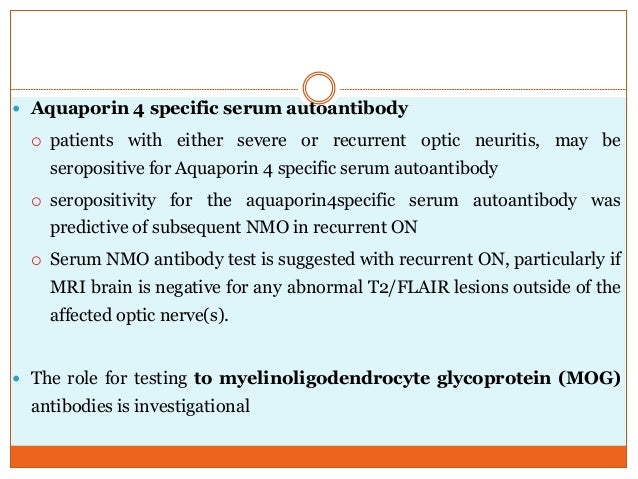

This approach avoids exposure to immunosuppression and its attendant risks for patients who may not relapse. įollowing the initial attack - Since up to 50 percent of patients may have a monophasic course, empiric immunosuppression is generally reserved for those who have relapsing disease. (See "Overview of intravenous immune globulin (IVIG) therapy" and "Intravenous immune globulin: Adverse effects".)Īpproach to attack prevention - The rationale for preventive treatment of MOGAD is that mild attack-related disability accumulates with each attack ( figure 1), and attacks can be severe and debilitating when they occur.

Intravenous immune globulin (IVIG) is an alternative, particularly in children with MOGAD, and is administered as a total dose of 2 g/kg divided over two to five days. (See "Therapeutic apheresis (plasma exchange or cytapheresis): Indications and technology" and "Therapeutic plasma exchange (plasmapheresis) with hemodialysis equipment" and "Therapeutic apheresis (plasma exchange or cytapheresis): Complications".) The ability to administer this procedure in younger children and its tolerability depends on the expertise of the treating center. Plasma exchange treatment is usually administered as one exchange every other day for five to seven exchanges in total.
#Mog ad trial
This was shown to be efficacious in a randomized trial (published in 1999) of patients with central nervous system (CNS) inflammatory demyelinating disease who were refractory to IV glucocorticoids, although the trial was done before myelin oligodendrocyte glycoprotein immunoglobulin G (MOG-IgG) testing was available. However, further study of the benefits and risks of this strategy are needed, particularly for patients with frequent relapses, as prolonged oral glucocorticoid treatment has a high potential adverse effect burden.įailure of initial acute therapy - For patients with MOGAD who are refractory to initial acute therapy with glucocorticoids or have an incomplete response, we suggest therapeutic plasma exchange. We commonly utilize this approach in adults and children after their first attack and sometimes with recurrent attacks a slow glucocorticoid taper may be helpful in patients with relapsing disease who are starting maintenance attack-prevention immunotherapy, which often requires weeks to months to take effect. Utility of glucocorticoid slow taper – Some experts have reported a slow oral glucocorticoid taper over a few months may reduce the risk of early relapse.

In one report with data available for 122 attacks treated with IV methylprednisolone, outcomes included complete or almost complete recovery in 50 percent, partial recovery in 44 percent, and no or almost no recovery in 6 percent. In general, MOGAD tends to be quite responsive to glucocorticoid therapy, with rapid reversal of symptoms in most cases this can at times even serve as a diagnostic clue. Such studies have not been performed in children. With increasing evidence of a similar effectiveness of oral prednisone in adults at the equivalent dose of 1250 mg once daily (25 tablets daily of oral prednisone 50 mg tablets) for five days, we also consider that as an alternative to the 1 gram IV methylprednisolone infusion for treatment of acute attacks in adults. (See "Treatment of acute exacerbations of multiple sclerosis in adults", section on 'Initial therapy with glucocorticoids' and "Optic neuritis: Prognosis and treatment", section on 'Treatment'.) This agrees with expert panel recommendations and is based upon studies of multiple sclerosis (MS) and idiopathic optic neuritis.


 0 kommentar(er)
0 kommentar(er)
